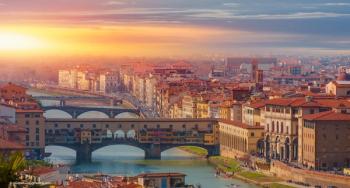
What's the best way to detect glaucoma?
GDx variable cornea compensation with scanning laser polarimetry (SLP-VCC), Heidelberg retina tomography (HRT) confocal scanning laser ophthalmoscopy (CSLO) and stereoscopic optic nerve head (ONH) photographs may all be useful in assisting clinicians to diagnose glaucoma.
GDx variable cornea compensation with scanning laser polarimetry (SLP-VCC), Heidelberg retina tomography (HRT) confocal scanning laser ophthalmoscopy (CSLO) and stereoscopic optic nerve head (ONH) photographs may all be useful in assisting clinicians to diagnose glaucoma, according to a report published in the March issue of the British Journal of Ophthalmology.
Nicolaas Reus, Maartje de Graaf and Hans Lemij from the Rotterdam Eye Hospital, The Netherlands, enrolled 40 healthy subjects, 48 patients with glaucoma and six patients with ocular hypertension. Measurements were taken of one eye from each subject using SLP-VCC and CSLO. Simultaneous stereoscopic ONH photographs were also obtained. Sixteen photographs of healthy and glaucomatous eyes were duplicated for assessing intra-observer agreement. For SLP-VCC, the nerve fibre indicator (NFI) was evaluated and for CSLO the Moorfields regression analysis (MRA) and the Bathija linear discriminant function (LDF) were used. Four glaucoma specialists, four general ophthalmologists, four ophthalmic residents and four optometrists classified the ONH photographs as either normal or glaucomatous.
The researchers found that SLP-VCC had the highest diagnostic accuracy, with a sensitivity, specificity and overall correct classification of 91.7%, 95% and 93.2% respectively. CSLO, expressed as Bathija LDF and MRA, had a diagnostic accuracy comparable to glaucoma specialists and general ophthalmologists with an overall accuracy of 89.8%, 86.4%, 86.7% and 85.2%, respectively. Residents classified the fewest eyes correctly.
Intra-observer agreement for classifying the ONH photographs ranged between 0.48 (within residents) and 0.78 (within glaucoma specialists). The agreement between observers and CSLO MRA (0.68) was statistically significantly higher (p<0.001) than between observers and SLP-VCC NFI (0.60) and CSLO Bathija LDF (0.62).
The authors agree that use of these imaging techniques may help clinicians in diagnosing glaucoma.
Newsletter
Get the essential updates shaping the future of pharma manufacturing and compliance—subscribe today to Pharmaceutical Technology and never miss a breakthrough.















































